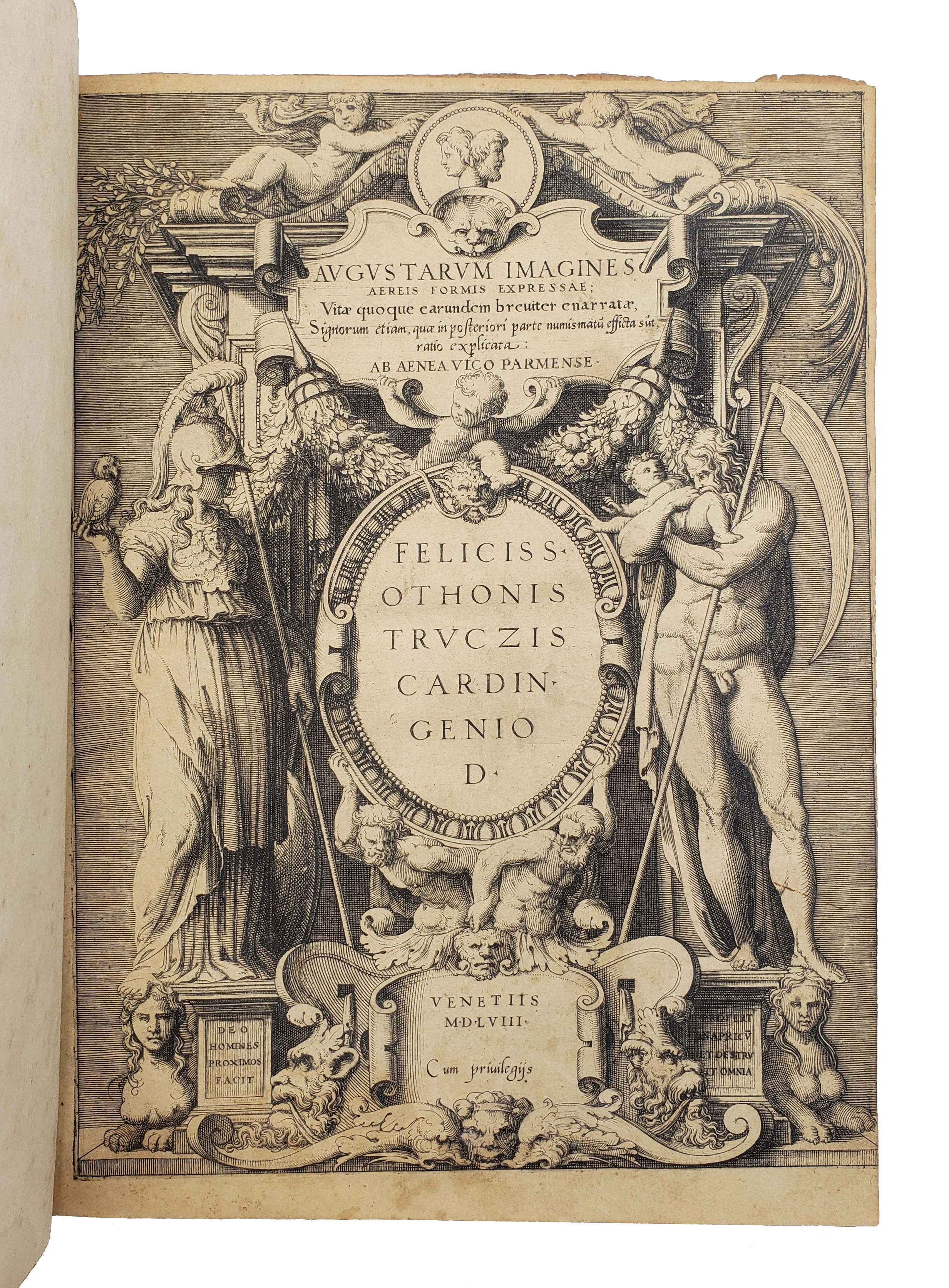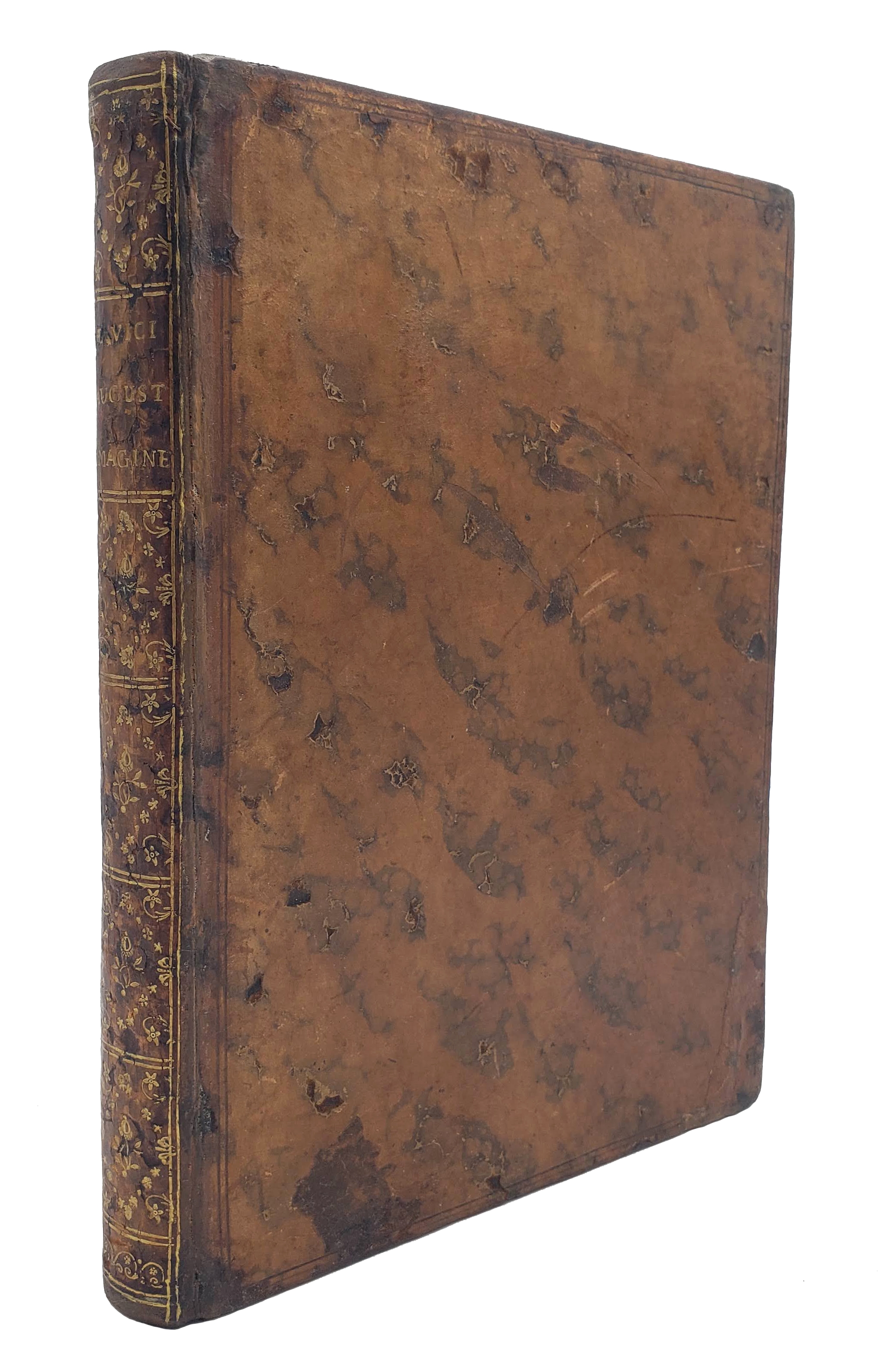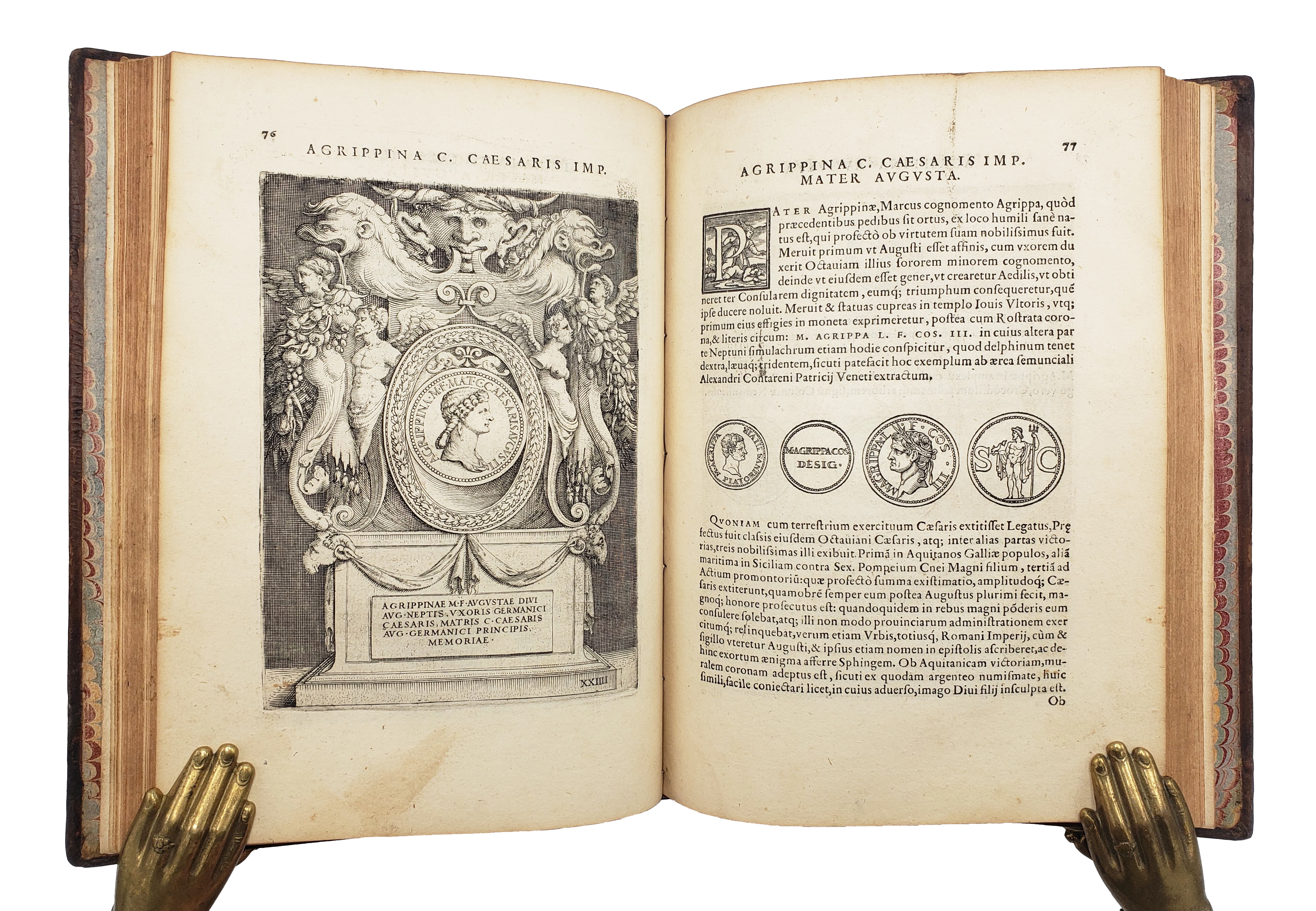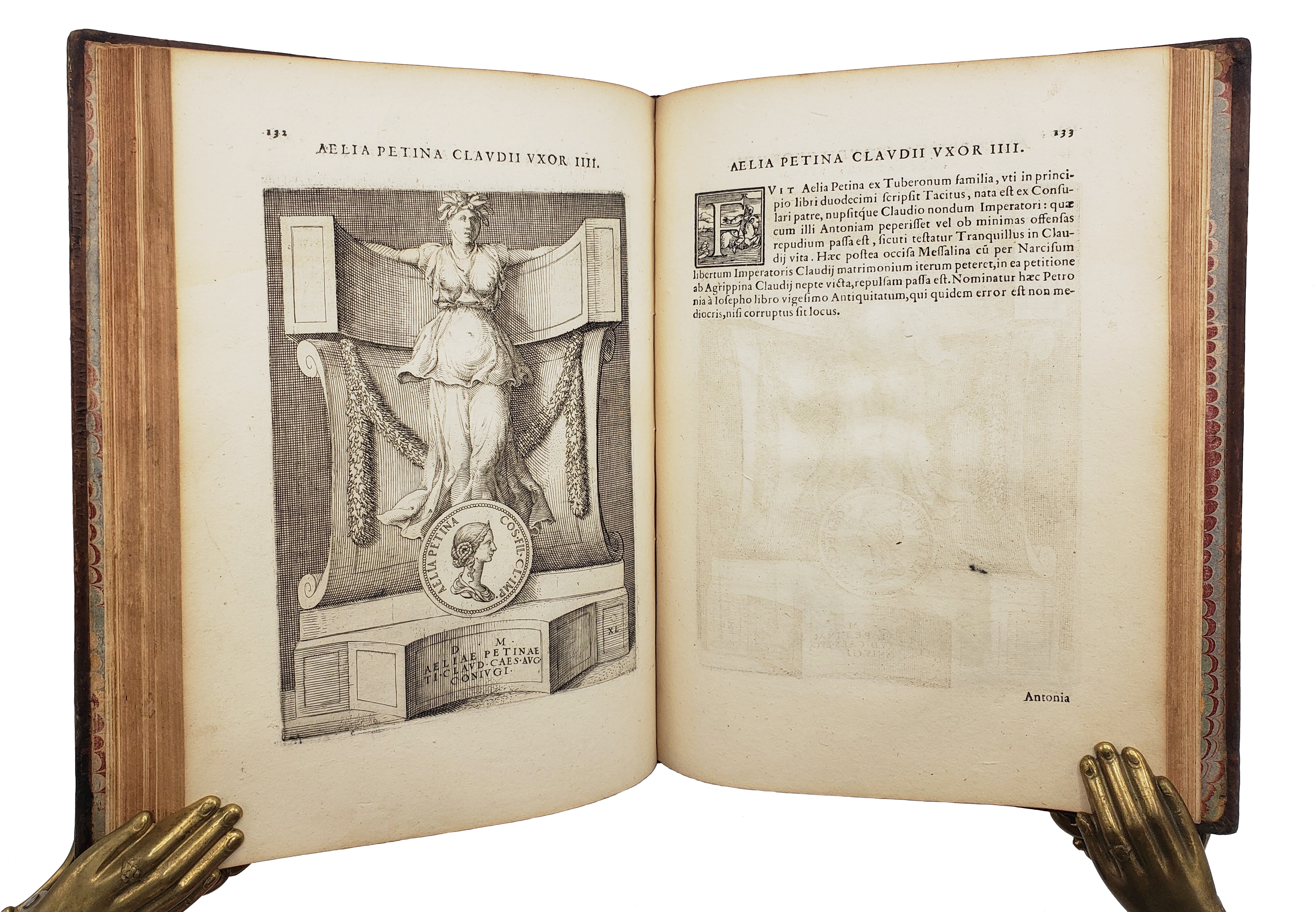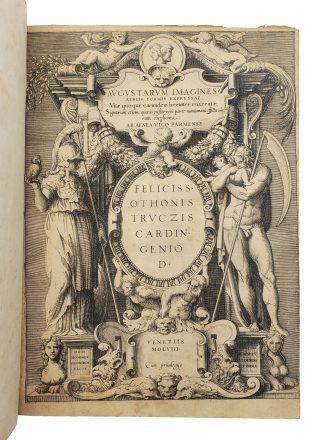VICO, Enea
Augustarum imagines [...]
Venice, Paulus Manutius, 1558.£3,250.00
FIRST EDITION THUS. 4to. [20] 192 [4]. Roman letter, t-p with Minerva holding owl and spear, and Saturn with child and scythe, on pedestals and sphinxes, set within ornamented architectural frame, historiated initials throughout. Engraved profile bust of Julius Caesar flanked by Venus and Mars, 63 numbered engraved plates in excellent impression of female members of the Roman imperial family set within architecture, and coins issued within their lifetimes, 38 engraved medals and coins in text. Cancel engravings pasted on G3 and G4 to correct transposition during printing, portraits of Cossutia and Servilia blank. Sightly age yellowed, t-p and prelims a bit browned, some old marginal water stains or ink splashes. A good, well-margined copy in 18th C French cat’s paw marbled calf, repair to lower outer corner of upper cover, lower corners worn, discreet repair to joints, spine gilt. Bookplate of renowned antiquarian Alain Moatti (1923-2023), a.e.r.
The first edition of Natale Conti’s (1520-1582) Latin translation of Vico’s 1557 Le imagini delle donne avgvste, dedicated by the author (1523-67) to cardinal Otto Truchsess von Waldburg (1543-73). Vico was an Italian engraver from Parma, who specialised in grotesque engravings based on antique paintings. Here he breaks away to use coins as his source material, depicting the key female figures of the Roman imperial court, spanning the Julio-Claudian and Flavian dynasties, from the late 1st C BC until 96AD. Each portrait comprises a roundel, set in an elaborate classical architectural scene, bearing the side profile of each woman, accompanied by her title. Their hair is dressed in the contemporary fashion, following authentic Roman numismatic material, though the engravings are elevated to a higher degree of detail, as seen in the ornate plaits, thanks to the greater precision allowed by the medium as compared to coinage. A few roundels are blank, likely due to the lack of numismatic source material, including Cossutia, the first wife of Caesar, Servilia, the first wife of Augustus, and the daughters of Agrippa and Drusus, both named Julia. In addition to the portraits, there are also some engravings of other coins which were minted during their lifetime. Agrippina the Younger’s apparition on the obverse of two coins, together with her son Nero, is particularly striking.
Each engraving is accompanied by a corresponding biography, both executed by Vico. The biographies differ largely in length, depending on the attention given to each individual in the ancient sources. At the beginning of the book, Vico lists his all his sources, looking to historians, poets, playwrights, satirists, and philosophers to retrieve biographical information. Livia, Messalina and both Agrippina the Elder and Younger are treated with particular attention. Furthermore, the women are categorised in various ways, for instance, Vico provides a list of those who achieved posthumous divine honours, equalling and sometimes surpassing the men who surrounded them.
The translator, Conti, was an Italian mythographer, poet, humanist and historian, whose interest in the classical world is evident in his major work, the Mythologiae. Though born in Milan, he described himself as Venetian as he spent his life working in the city.
USTC: 863206; Brunet V: 1175; Renouard: 176:18; Mortimer: II 533; Adams: V 634.In stock


